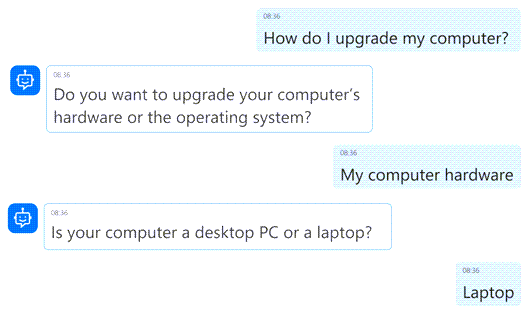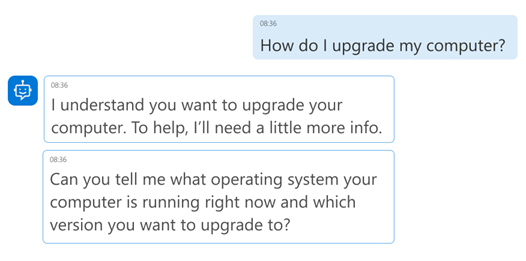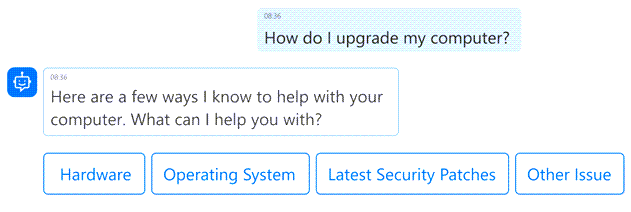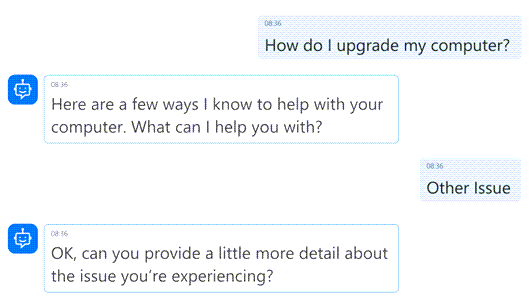Disambiguate customer intents
Disambiguation is the process of narrowing down a user intent by asking clarifying questions in your conversational experiences. With a clearer understanding of a user's true intent, you can better direct them to the information they're looking for. Disambiguation is helpful when you have multiple intents that are similar or when the user request is unclear. Whether disambiguation is necessary depends on the type of scenarios you support, how you identify and route different intents, and the content you have available for users.
For example, the request "How do I upgrade my computer?" might seem straightforward, but is it?
- Does the user want to upgrade their operating system or the computer hardware that it runs on?
- Does the user want to upgrade their desktop PC or tablet, if the process is different for each?
- Does the user want to upgrade their operating system to the newest version or update their current operating system with security patches?
Disambiguation approaches
You can approach disambiguation in a few ways, such as by asking more questions, asking targeted questions, and providing options.
Ask more questions
Ask questions that help you narrow down the user intent. Based on the preceding example, the conversation might look like this:

This method of disambiguation leads to more conversational turns before the user's intent is identified. While clarity is important, balance the number of questions you ask with how helpful they are. If disambiguation unnecessarily extends an interaction or makes the conversation feel more like an interrogation, it might lead to user frustration.
Ask targeted questions
Another approach is to ask targeted questions that build on the initial request to get the user to the best possible content faster.

Similar to the other approaches, the goal is to try to understand the user's intent as quickly as possible, without accidentally asking them irrelevant questions. However, open-ended questions can make the interaction more complex. If the user includes too much detail in their response, the conversational user experience (CUX) might become confused or trigger the wrong flow.
Provide options
Provide suggestions at the start of the interaction to help the CUX disambiguate more quickly and reduce the need to ask multiple follow-up questions.

This method is up-front about what kind of information is available to the user. However, if none of the options address the user intent, the conversation must provide a way for the user to say so and then be redirected to the correct information. Examples include offering options like "None of these" or "I have a different question" and then following up with a request to provide more context or details.

Preparing for out-of-scope requests
You might find some cases where disambiguation is impossible because the user intent falls outside the scope of your conversational experience and you don't have the content to support the scenario. It's fine not to have an answer for every question a user might ask. However, try to identify the most likely out-of-scope requests and prepare answers that make it clear that you understand the intent and help users find the assistance they need, if possible. Planning ahead prevents users from reaching a dead end, and can also provide valuable data if you see an increase in traffic to areas that you originally planned to be out of scope. Learn more in Design graceful fallbacks and handoffs.